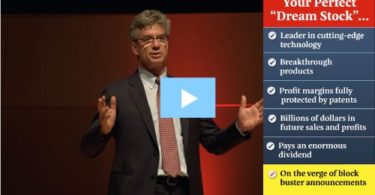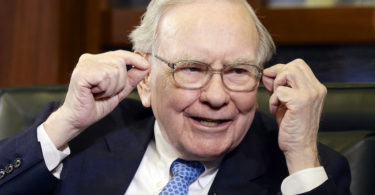Company Overview
Intellia Therapeutics (NASDAQ: NTLA) is a clinical-stage biotechnology company pioneering CRISPR/Cas9 gene editing therapies for severe diseases ([1]). The company’s pipeline includes in vivo gene-editing candidates for transthyretin amyloidosis (ATTR) and hereditary angioedema (HAE), both now in Phase 3 trials, with potential U.S. commercial launches targeted in the coming years ([2]). On September 19, 2025, JMP Securities reiterated its “Market Perform” rating on NTLA, signaling a neutral outlook ([3]). This reaffirmation came shortly after Intellia navigated an adverse event in one of its trials – a case of Grade 4 liver enzyme elevation – that initially spooked investors but was later deemed a manageable drug-related toxicity with no hospitalization required ([2]) ([2]). JMP’s analyst noted that follow-up discussions with Intellia’s management mitigated safety concerns and that the market “appears to maintain long-term confidence” in the company despite near-term volatility ([2]) ([2]). Overall, NTLA’s share price has been volatile, declining roughly 27% year-to-date and ~35% over the past year amid shifting sentiment on biotech risk ([4]).
Dividend Policy & Yield
Intellia does not pay any dividend and has no history of dividend distributions ([5]) ([5]). Management explicitly states that it has never declared or paid cash dividends and intends to retain all future earnings to fund R&D and growth ([6]). In fact, Intellia does not expect to pay dividends for the foreseeable future, so investors’ returns will come solely from potential stock price appreciation ([6]). Consequently, income-focused metrics like dividend yield, FFO, or AFFO are not applicable for NTLA – the company is in an early growth stage and generates net losses rather than distributable cash flows ([1]) ([7]). For example, Intellia reported a net loss of $101.3 million in Q2 2025 (improved from a $147.0 million loss in Q2 2024) ([1]), underscoring that it currently has no earnings to distribute. Management’s stance is to reinvest any future profits into development, meaning NTLA will likely remain a zero-yield stock in the near term ([5]) ([5]).
Leverage and Debt Maturities
Intellia maintains a conservative balance sheet with no outstanding long-term debt. The company’s debt-to-equity ratio stood at 0.00 as of Q2 2025 ([8]), indicating it has no financial debt financing in its capital structure. Instead, operations have been funded through equity raises and collaboration revenues ([5]) ([5]). As a result, Intellia has no interest-bearing debt maturities to worry about – a positive in the current higher rate environment. Its liabilities mainly consist of accounts payable, accrued expenses, deferred revenue from partnerships, and lease obligations, which totaled $183.6 million at June 30, 2025 ([1]). Crucially, Intellia had approximately $630.5 million in cash, cash equivalents and marketable securities on hand at quarter-end ([1]). This substantial cash reserve – built from past equity offerings and partner payments – provides a runway into the first half of 2027, by the company’s estimates ([1]). In other words, management believes it has enough liquidity to fund ongoing R&D and operating needs for nearly two more years without needing new financing. The expansion of a key Phase 3 trial’s enrollment (to ~1,200 patients) is not expected to impact this financial runway ([1]). With no near-term debt repayments and a hefty cash cushion, Intellia’s financial leverage is low – the company is essentially self-financing via equity and collaborations. This lowers balance-sheet risk, though it also means Intellia will likely turn to additional equity or partner funding if development timelines extend beyond 2027 (since it has no debt capacity in use) ([6]) ([6]).
Analyst Coverage & Sentiment
NTLA is widely covered by biotech analysts, reflecting its prominence in the gene-editing field. According to MarketBeat data, the stock has a consensus rating of “Moderate Buy,” with 11 analysts rating it a Buy, 7 Hold, and 1 Sell as of September 2025 ([9]). The average analyst price target is about $27.4 per share ([9]), implying meaningful upside from recent trading levels in the low-to-mid $10s. However, opinions vary dramatically – recent price targets range from as low as $8 to as high as $106 ([2]), highlighting the high uncertainty around Intellia’s future fortunes. JMP Securities’ Market Perform (Hold) stance puts it among the more cautious voices, essentially advising investors to remain neutral. Notably, other firms have trimmed their targets after Intellia’s updates over the summer: for example, Wells Fargo reaffirmed an “Overweight” rating in August but cut its target to $45 (from $50) ([9]), Chardan Capital kept a Buy but lowered the target from $68 to $60 ([3]), and Royal Bank of Canada (RBC) maintained an Outperform while reducing its target to $21 (from $25) ([9]). Meanwhile, some analysts remain bullish – Guggenheim Securities in May 2025 reiterated a Buy, citing the large potential market for Intellia’s therapies and progress in trial enrollment, though it too revised its target down to $45 (from $55) ([2]). The breadth of analyst coverage and recent target adjustments indicate a tempered optimism: most analysts acknowledge Intellia’s groundbreaking long-term potential, but they are also moderating expectations in light of clinical and financial uncertainties. In sum, Wall Street sentiment on NTLA is cautiously optimistic but far from unanimous, with JMP’s neutral rating underscoring the “wait-and-see” approach of some observers ([3]) ([9]).
Valuation and Comparables
As a pre-commercial biotech, Intellia’s valuation hinges on future prospects rather than current earnings. The company’s market capitalization is around $1.3 billion at recent prices ([10]). With over $630 million in cash on the balance sheet, Intellia’s enterprise value (EV) – i.e. the market’s valuation of its business net of cash – is roughly in the ~$900 million range ([10]). This implies that investors are valuing Intellia’s pipeline and technology platform at only a few hundred million dollars above its cash holdings. In other words, a significant portion of NTLA’s market cap today is backed by cash, reflecting a market skeptics’ discount on the unproven pipeline. Traditional valuation multiples are not very meaningful for Intellia: the company has negative earnings (P/E is not meaningful) and minimal revenue so far. For perspective, Intellia reported only $14.2 million of collaboration revenue in Q2 2025 (and ~$30.9M in the first half) ([1]), while its R&D expenses in that quarter were about $97 million ([1]). As such, NTLA’s price-to-sales ratio is extremely high – on the order of 20+ times trailing 12-month revenue ([11]) – which is typical for early-stage biotechs with scant sales. A more relevant metric is price-to-book value: Intellia currently trades at roughly 1.6× its book value (shareholders’ equity) ([7]), indicating the market is pricing in some premium over the company’s net assets (mainly cash) for its technology and drug candidates. By comparison, peer CRISPR gene-editing companies like CRISPR Therapeutics and Editas Medicine also trade primarily on pipeline potential; their market caps and book multiples fluctuate with clinical news flow. Intellia’s ~$1.3B market cap is smaller than CRISPR Therapeutics (which has a late-stage sickle cell program with a partner) but larger than Editas, positioning it in the mid-cap range for gene-editing biotech. Overall, NTLA’s valuation appears to price in moderate success – the stock does not look overly expensive relative to the multi-billion dollar peak sales potential of its therapies, but neither is it priced as a sure thing. The subdued EV and P/B multiples suggest that a substantial skepticism discount remains, pending clearer evidence of clinical success and a path to commercialization.
Risks, Red Flags, and Open Questions
While Intellia offers a cutting-edge therapeutic platform, investors face significant risks and uncertainties with NTLA:
– Clinical & Regulatory Risk: As with any biotech, trial outcomes are pivotal. Intellia’s entire investment thesis rests on its lead programs proving safe and effective in Phase 3 and winning regulatory approval ([2]). Any clinical setback – such as serious adverse events, efficacy shortfalls, or trial delays – could derail approval timelines. The recent liver toxicity event illustrates this risk: although it was managed and did not meet severe injury criteria ([2]) , it highlights how unforeseen safety issues can emerge. It remains unknown whether such events occurred in the treatment or placebo group (Intellia assumed it was treatment-related) ([2]). Regulatory agencies will scrutinize safety closely, and approval is not guaranteed until robust Phase 3 data are in hand. This binary clinical risk is inherent – a single trial failure could substantially impair NTLA’s valuation.
– Cash Burn & Future Financing: Intellia continues to operate at a net loss, with large ongoing R&D expenditures (>$97M in Q2 2025 alone) against minimal revenue ([1]) ([1]). The company projects its current cash can fund operations into H1 2027 ([1]), but if development timelines slip or commercial launch is delayed, additional capital will be needed. Intellia has historically raised funds via equity (e.g. follow-on offerings, at-the-market sales) and could do so again, potentially diluting existing shareholders ([5]) ([5]). Rising interest rates make debt financing less attractive, and Intellia has no significant debt capacity unused. An open question is whether the company might partner or license assets to bolster funding – for instance, securing upfront payments from new collaborations. Investors should expect continued cash burn for the next few years, and dilution risk is a real red flag if the cash runway shortens before sustainable revenues arrive.
– Competitive and Market Risks: Intellia’s therapies, if approved, will enter markets with established treatments. For example, transthyretin amyloidosis (ATTR) patients currently have RNA interference drugs (by Alnylam) and other therapies available, while HAE has prophylactic monoclonal antibodies (Takeda’s lanadelumab, etc.). Convincing physicians and patients to adopt a first-of-its-kind gene editing therapy – possibly at a very high one-time cost – is an open question. Payers may scrutinize the long-term value of a one-shot cure vs. chronic therapy. Moreover, Intellia isn’t alone in gene editing: competitors like CRISPR Therapeutics, Editas, Beam Therapeutics, and others are developing their own CRISPR-based treatments. Larger pharmaceutical companies are also advancing gene therapies (and could field non-CRISPR gene-editing or base-editing approaches). Intellia will need to demonstrate clear clinical advantages to carve out market share. If a rival reaches the market first or offers a safer/easier solution, Intellia’s commercial opportunity could be limited – a risk that current valuations only partly reflect. The moderate consensus target (~$27) vs. an earlier triple-digit bull cases ([2]) shows that the market has tempered expectations amid growing competition and realistic penetration assumptions.
97% Off — Claim the #1 Altcoin Guide Before It's Gone
– Partnership Dependence & IP Uncertainties: Intellia’s strategy relies on collaborations – notably with Regeneron Pharmaceuticals – for both funding and development support. Regeneron shares 25% of costs and future profits on Intellia’s lead ATTR program ([6]) and provides technology and expertise for other liver-targeted programs ([6]) ([6]). While this partnership is a strength, it is also a dependency risk: if Regeneron “were to terminate or materially alter” the collaboration, Intellia’s business and prospects would be harmed ([6]). Regeneron could change strategic priorities or invest in alternative technologies, potentially reducing its support for Intellia’s projects ([6]). Losing a major partner or facing a funding shortfall from collaborators is a key risk to monitor. Additionally, intellectual property in the CRISPR field remains complex. Intellia licenses key CRISPR/Cas9 patents (e.g. from UC Berkeley/Charpentier via Caribou Biosciences) ([6]) ([6]), and the company is embroiled in the broader CRISPR patent interference issues between academic groups. Competing claims by the Broad Institute, ToolGen, and others are still being litigated – if rivals ultimately prevail on certain patent claims, they could potentially assert IP against Intellia’s products or demand licensing fees ([6]) ([6]). While a 2022 U.S. decision favored the Broad Institute in a key CRISPR patent dispute, appeals are ongoing ([6]) ([6]). Uncertainty over patent rights is a red flag for all CRISPR companies: Intellia may end up owing royalties that squeeze future margins, or in worst case, face injunctions without a license. The company must continuously fortify its patent portfolio and freedom-to-operate – an evolving challenge in this cutting-edge field.
– Execution & Commercialization Questions: As Intellia approaches potential commercialization (aiming for its first product launch around 2027), it faces new execution hurdles. The company has begun building a commercial infrastructure (reflected in rising G&A costs for commercial readiness) ([1]), but launching a therapy as a first-time commercial company carries uncertainty. Can Intellia effectively scale up manufacturing for a complex gene therapy and navigate the logistics of delivering a personalized medicine (if required)? Will the company market the drug on its own or seek a commercial partner for sales and distribution? Management’s current plan leans toward independently commercializing in key markets (to capture more profit), which means hiring and training a specialized sales force and patient support services – a significant undertaking for a mid-size biotech. There’s also an open question on pricing: gene editing treatments could be extremely high-cost upfront. Intellia will need to set a price that reflects the value of a potential cure while convincing insurers and healthcare systems to reimburse it. The long-term durability of the treatment’s effect is another unknown that could influence pricing and uptake (e.g. will one dose last a lifetime or will patients need re-treatment?). These open questions about real-world commercial execution add another layer of risk beyond the science. Investors will be watching for clarity on regulatory timelines, launch strategy, and post-approval plans as the Phase 3 programs progress.
Conclusion
Intellia Therapeutics (NTLA) represents a high-risk, high-reward player at the forefront of gene editing. The recent “Market Perform” call by JMP Securities encapsulates the cautiously neutral stance that many are taking – acknowledging Intellia’s revolutionary potential, yet mindful of the significant hurdles ahead ([3]). On the one hand, the company is well-capitalized, has two first-in-class CRISPR therapies nearing the finish line, and enjoys notable partner support and a generally bullish analyst outlook ([9]) ([2]). On the other hand, investors face a long wait and binary outcomes: within the next 18–24 months, pivotal trial readouts will determine if Intellia’s science translates into an approved drug. In the meantime, NTLA’s stock is likely to swing with each clinical update, and further capital needs or competitive developments could emerge as wild cards. For now, JMP’s Market Perform rating suggests patience – the stock may be fairly valued relative to its risk/reward profile until clearer catalysts arrive. Intellia’s dividend-less, cash-intensive model means it is not a play for income or the faint of heart, but rather for those willing to bet on a possible paradigm shift in medicine. The coming years should answer the open questions around safety, efficacy, and commercialization. If Intellia’s bets pay off, current valuations could prove modest; if not, downside risks remain considerable. As such, prospective investors should closely monitor trial progress, cash burn, and partnership dynamics, as these will drive NTLA’s trajectory more than any near-term earnings metrics ([2]) ([6]). In summary, Intellia offers a compelling story with transformative upside, but with equally real risks and execution challenges – a balance that rightly earns it a “wait-and-see” Market Perform assessment at present.
- Keep cash and bonds
- Trust the system will fix itself
- Gold & Bitcoin hedges
- High-quality inflation-resistant stocks
Sources
- https://ir.intelliatx.com/news-releases/news-release-details/intellia-therapeutics-announces-second-quarter-2025-financial
- https://investing.com/news/analyst-ratings/intellia-stock-holds-after-jmp-reiterates-market-perform-93CH-4069508
- https://gurufocus.com/news/3114230/ntla-jmp-securities-reiterates-market-perform-rating-ntla-stock-news
- https://finance.yahoo.com/quote/NTLA/?fr=sycsrp_catchall%2F
- https://sec.gov/Archives/edgar/data/1652130/000095017025066914/ntla-20250331.htm
- https://sec.gov/Archives/edgar/data/1652130/000095017025029007/ntla-20241231.htm
- https://macrotrends.net/stocks/charts/NTLA/intellia-therapeutics/price-book
- https://macrotrends.net/stocks/charts/NTLA/intellia-therapeutics/debt-equity-ratio
- https://etfdailynews.com/2025/09/21/intellia-therapeutics-nasdaqntla-given-market-perform-rating-at-jmp-securities/
- https://gurufocus.com/stock/NTLA/summary
- https://macrotrends.net/stocks/charts/NTLA/intellia-therapeutics/price-sales
For informational purposes only; not investment advice.





